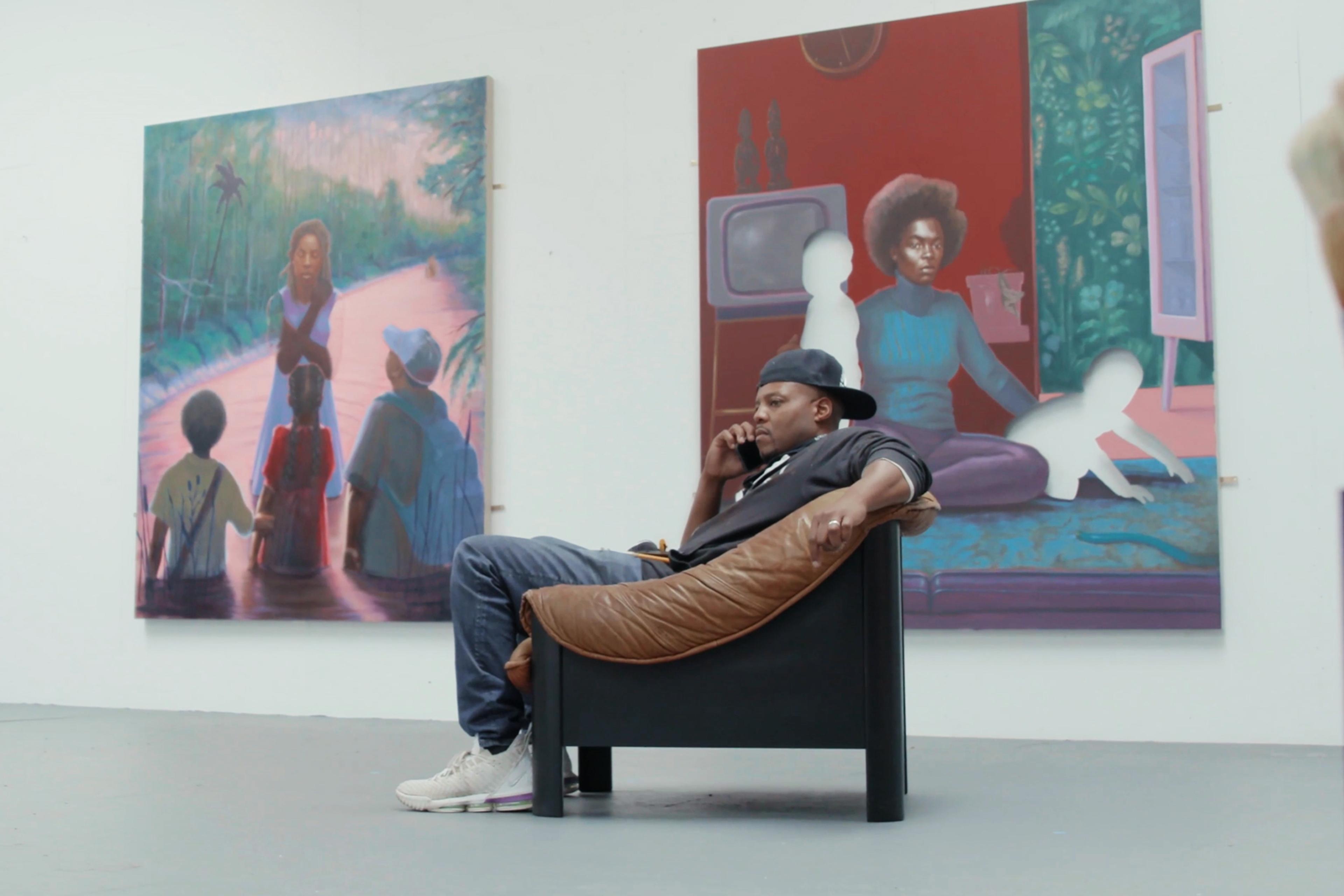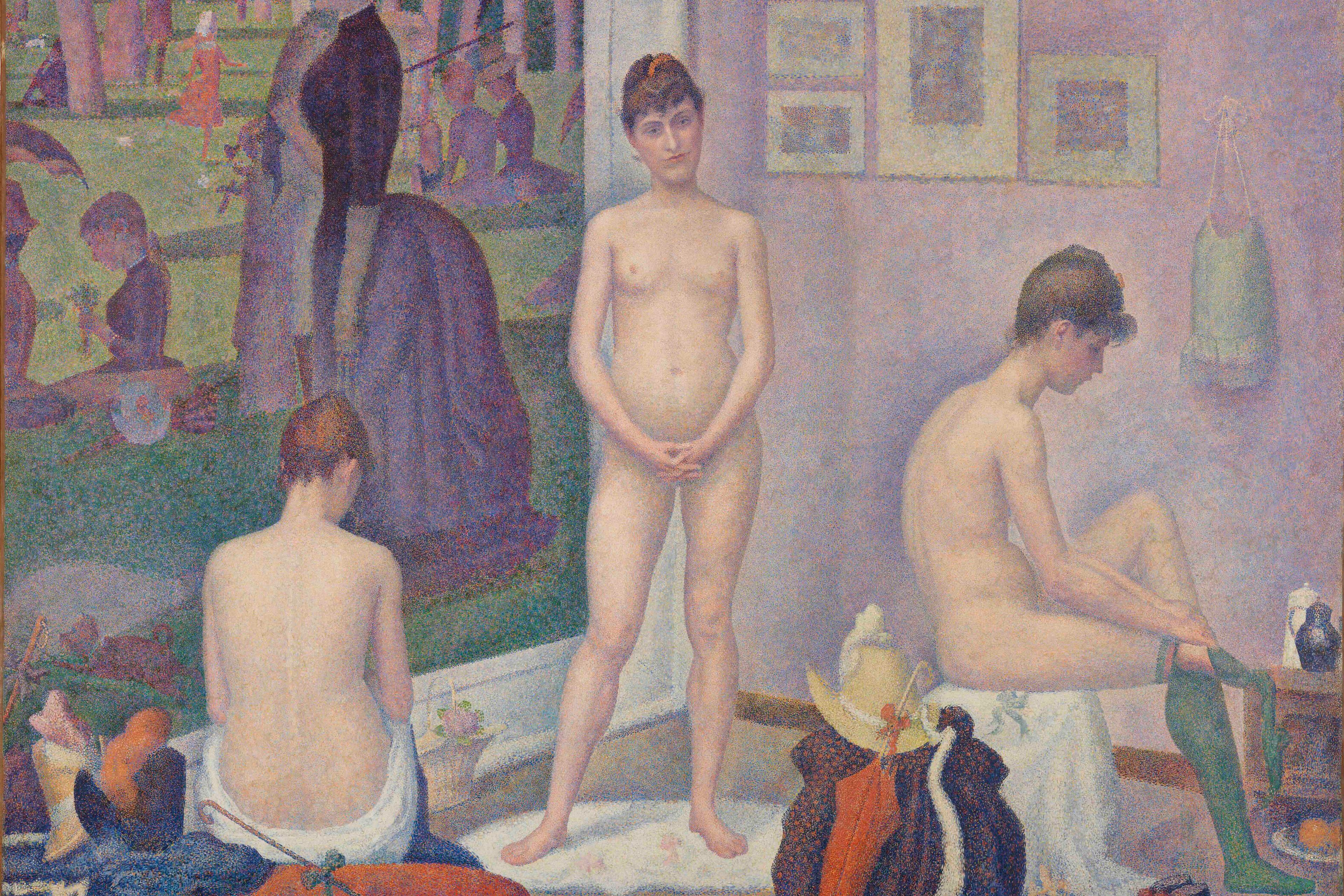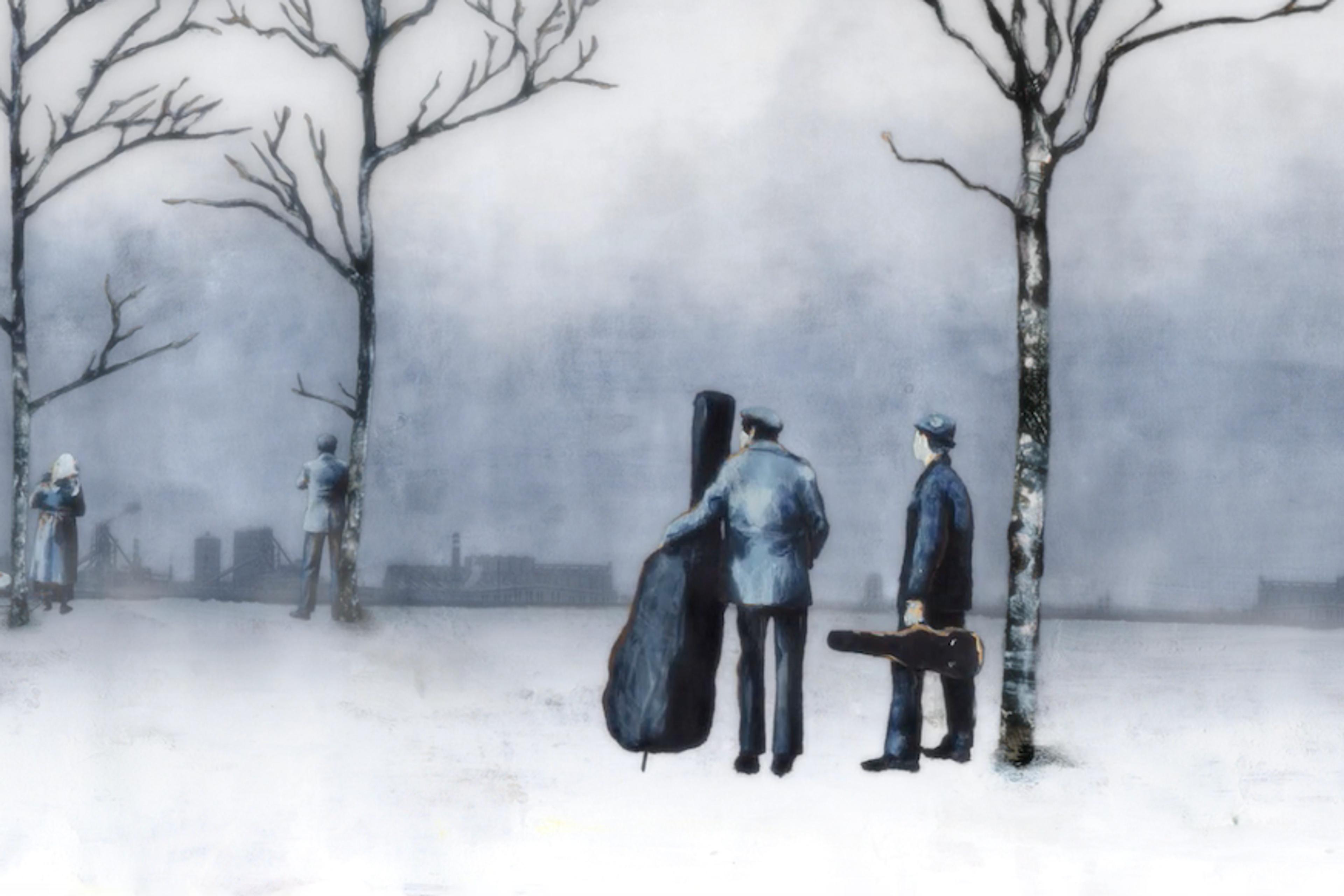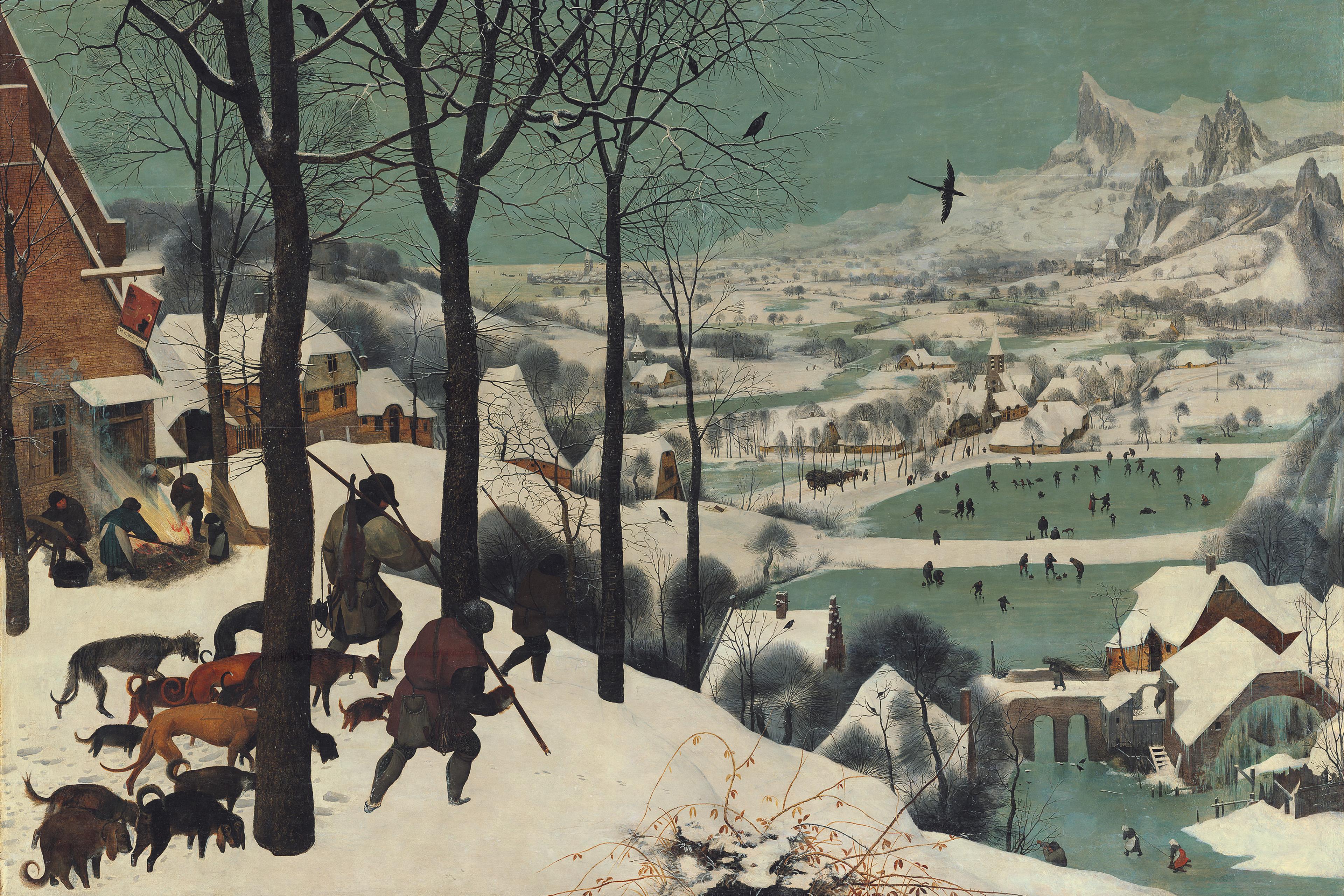‘So all that waiting just for this?’
Whether it’s the Mona Lisa being crowded by selfie-happy tourists at the Louvre, or perhaps, more recently, a digital, from-your-desk tour of the Metropolitan Museum of Art, setting is an inescapable vital part of how we respond to an artwork. Capturing a scene in which three disparate elements – the Wassily Kandinsky oil painting Dramatic and Mild (1932), a small room, and an exceptionally fit security guard – come together in the context of a unique exhibition, this short from the Russian director Nastia Korkia invites viewers to contemplate the central role of place in the experience of art.
On its surface, Korkia’s film – eponymously named for the Kandinsky painting at its centre – is an unfussy exercise. It chronicles a small slice of the 2017 ‘Geometry of Now’ arts festival, which was held inside the decommissioned power station-turned-art-complex GES-2 in Moscow. With a fly-on-the-wall observation style, the short unfolds almost exclusively within what was once (and still very much looks like) a small workers’ lounge, where Kandinsky’s painting is on temporary display. However, that painting doesn’t make a cameo until the very end, as Korkia’s focus is on the people and small interactions that percolate in the space.
As festival attendees enter the room following a lengthy wait, the painting refracts a brilliant spectrum of reactions. A man seems intent on demonstrating his fine art bona fides, commenting on what he perceives as the complex symbolism of the piece. One woman probes the painting’s price. Another seems to have stumbled in off the street, more inspired by the security guard’s physique than the Kandinsky. The security guard, for his part, politely fields the wide array of questions flung his way, demonstrating a perhaps surprising depth of knowledge.
With a brisk runtime and an instantly intriguing character at its centre, Dramatic and Mild is hardly as abstruse as its premise of ‘the art of viewing the art-viewer’ might seem. Instead, it quickly builds its own mood – one of charm and small surprises – while inviting its audience to contemplate any number of questions about what it means to bear witness to art. Ultimately, though, there’s no single cohesive message to the proceedings, leaving its meaning very much – and quite appropriately – in the eye of the beholder.
Written by Adam D’Arpino







